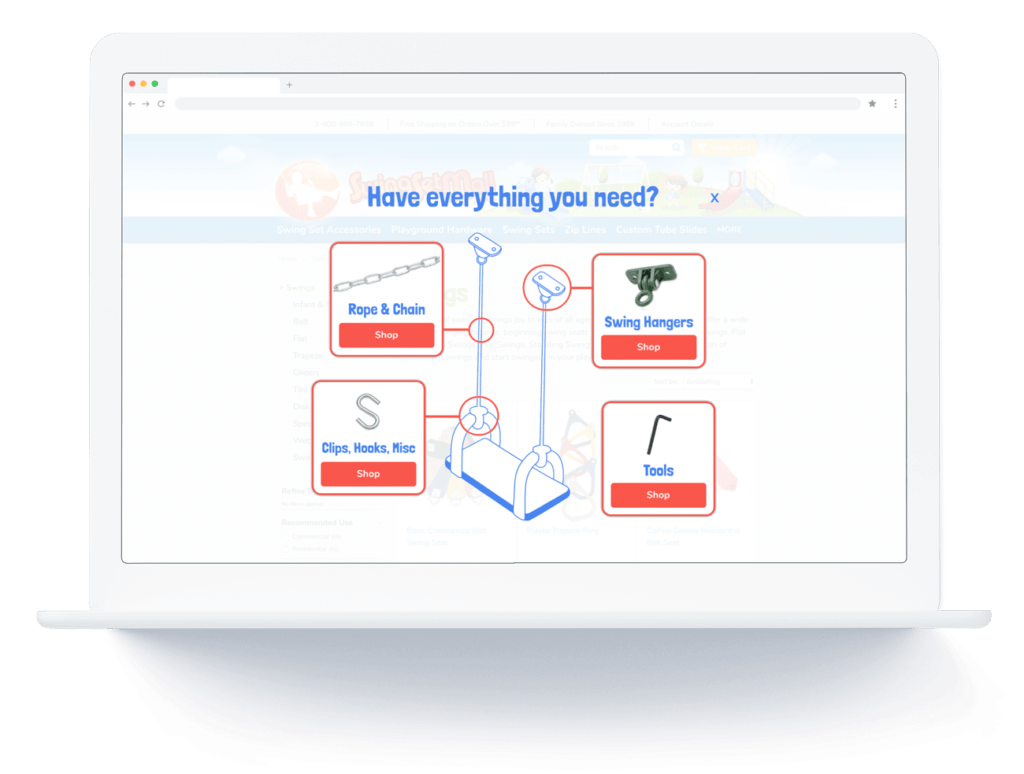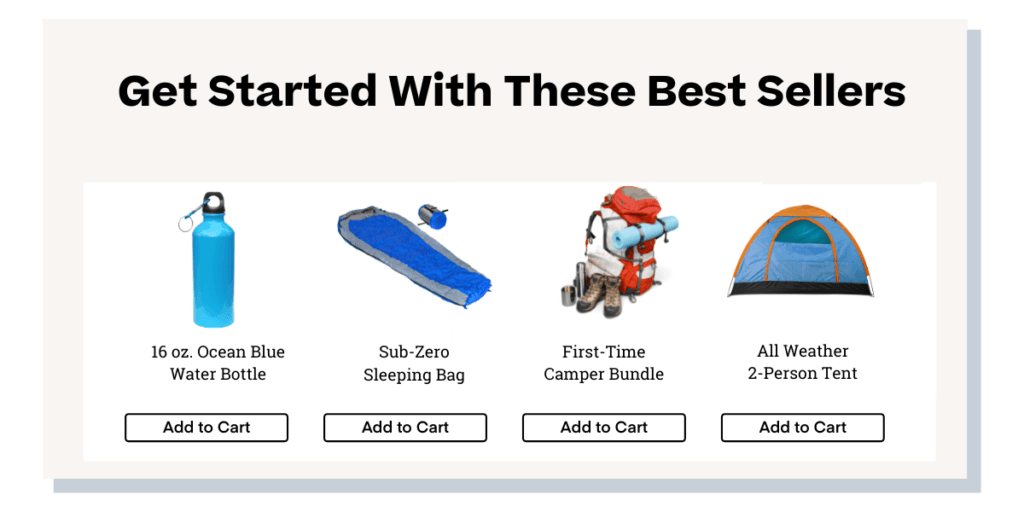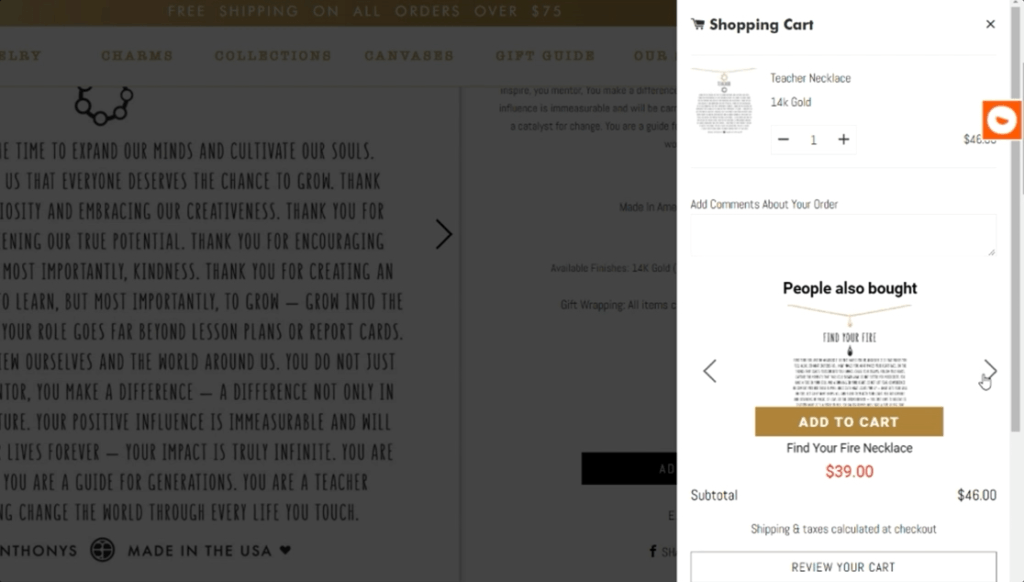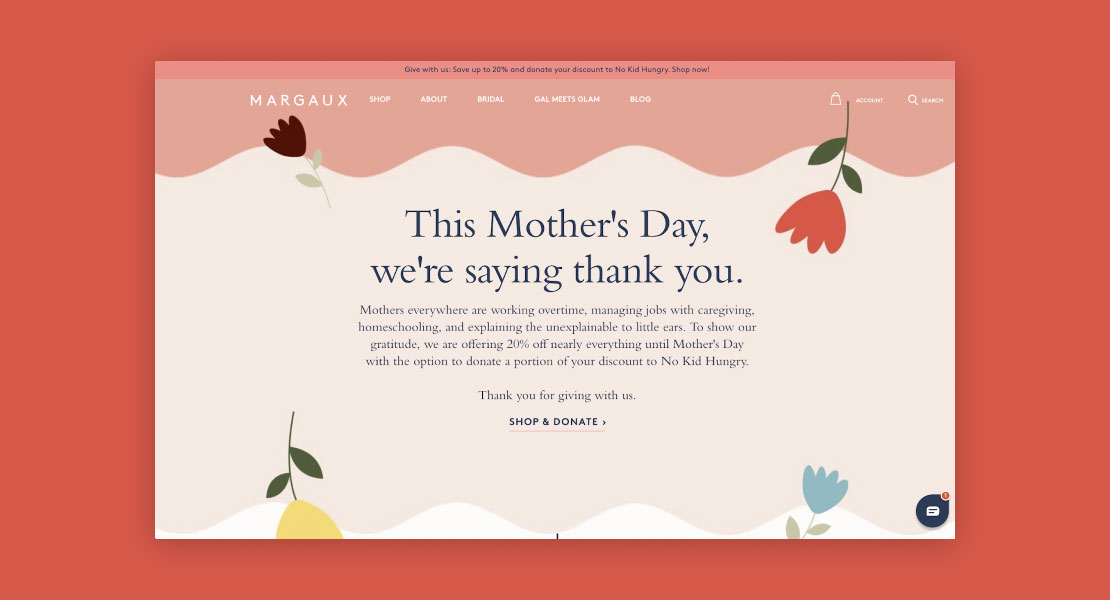As a business owner or marketer, you’re always looking for ways to grow your traffic and revenue. One effective way to achieve this is through cross-selling.
The cross-sale strategy involves offering customers complementary or related products to what they’ve already purchased or shown interest in.
Join us as we explore the benefits of cross-selling and learn some practical tips on how to implement this tactic effectively to boost your sales.
Understanding the Cross-Selling Technique
Cross-selling works by offering customers additional products or services that are related to or complement what they have already purchased or shown interest in.
The strategy can be implemented in a variety of ways, including suggesting complementary items during the checkout process, offering package deals that bundle products together, or recommending related products through email or other marketing channels.
For example, let’s say a customer purchases a new laptop. As part of the cross-selling strategy, you may offer a laptop case, additional software, or a warranty package at the checkout. These additional products or services complement the laptop purchase and provide added value to the customer.

Benefits of Cross Promotions
Cross-selling can offer several benefits to businesses, including:
- More revenue opportunities. By suggesting additional products or services to customers, businesses can increase the average order value and overall revenue.
- Improved customer experience. You may improve the entire shopping experience and customer happiness by delivering personalized recommendations to customers. This can result in recurring business and positive word-of-mouth referrals.
- Enhanced customer loyalty. Cross-selling can help companies strengthen their client relationships by showing that they have a grasp of their requirements and preferences. As a result, consumer loyalty and repeat business may increase.
- Reduced marketing costs. Cross promotions can be a more cost-effective strategy than acquiring new customers. By leveraging current customer data and relationships, you can reduce marketing costs and increase profitability.
- Increased efficiency. By offering additional products or services during the checkout process, businesses can streamline the sales process and increase efficiency. This can lead to increased sales and improved operational efficiency.
How to Identify Cross-Selling Opportunities
Identifying cross-selling opportunities is key to implementing an effective cross sale strategy. Here are some tips to help you identify opportunities:
Analyze Customer Data
Analyzing customer data can provide valuable insights into their buying behavior and preferences. This data can be utilized to identify products or services that are frequently purchased together, as well as items that may supplement a customer’s initial purchase.

Conduct Market Research
Market research may help organizations understand their customers’ requirements and preferences, as well as uncover market trends and possibilities. This can assist them in identifying new items or services that may be of interest to their current clients.
Utilize Customer Feedback
Use customer feedback to learn what they want and what needs they have that your current products or services do not meet. You can then leverage this information to identify areas where cross-selling can provide added value.
Monitor Trends
Monitoring industry trends and changes in customer behavior can help businesses identify new cross-selling opportunities. For example, changes in consumer preferences or new product releases can create opportunities for businesses to cross-sell complementary products or services.
How to Create an Effective Cross-Selling Campaign
Creating effective cross-sell promotions can help increase revenue and provide added value to customers. Here are some tips to help you create effective cross-sell promotions:
Make the Offer Relevant
The cross-sell offer should be relevant and complementary to the product or service the customer has already purchased. For example, if a customer has purchased a camera, the cross-sell offer could be a camera bag or a tripod.
Use Compelling Messaging
The messaging used to promote the cross-sell offer should be clear and compelling. Use language that emphasizes the value of the additional product or service and how it enhances the customer’s experience.
Time the Offer Appropriately
Timing is important when promoting cross-sell offers. If a cross-sell offer is made at the wrong time or in the wrong context, it may be seen as intrusive or pushy, which can negatively impact the customer’s perception of the business. However, making the offer at the right time and in the right context can improve the customer experience and foster trust and loyalty.

Personalize the Offer
Use customer data to personalize the cross-sell offer. This approach can make the customer feel valued and understood, which can increase the probability of making a purchase. Personalization also enhances the customer experience by providing them with relevant and useful information. Customers are more likely to engage with a cross-selling offer if it’s tailored to their interests, needs, and preferences. By providing personalized product recommendations, businesses can enhance the customer experience and build stronger relationships with their customers.
Keep It Simple
The cross-sale offer should be easy to understand and straightforward. This method reduces uncertainty and makes the offer easier to understand for customers. If an offer is overly complicated or intricate, it can be overpowering, resulting in confusion or even frustration. Customers who are confused or frustrated are less likely to make a purchase or possibly quit their shopping cart entirely.
Train the Sales Staff
Effective staff training is essential for the success of cross-selling promotions. Properly trained sales reps can provide consistent, high-quality customer experiences that build trust and encourage customers to make additional purchases. By educating staff on cross-selling techniques, you can also ensure that the promotions are being presented in a compelling and persuasive way, increasing the likelihood of a successful conversion. Additionally, well-trained staff can address any questions or concerns customers may have about the promotion, which can further boost sales and customer satisfaction.
Test and Optimize
Test different cross-sell techniques and strategies to see what works best for your business and customers. Use data and analytics to optimize the cross-promotions over time. Try experimenting with different types of offers, such as discounts, bundle deals, or free gifts, and analyzing the results to see which ones generate the most interest and conversions. It can also mean testing different promotional channels, such as email marketing, social media, or in-store displays, to see which ones drive the most traffic and sales.

Common Mistakes to Avoid
While cross-selling can be a valuable marketing strategy for businesses, there are some common mistakes that can hinder its effectiveness. Here are some mistakes to avoid when cross-selling:
Offering Irrelevant Products
Offering products and services that are not related to what the customer has already purchased or shown interest in can be ineffective and even frustrating for the customer. It’s important to ensure that the cross-sell offer is relevant and complementary to the customer’s needs and preferences.
Pushing Too Hard
Pushing too hard or being too aggressive with cross-selling can turn customers off and damage the relationship. It’s important to strike a balance between making the offer and respecting the customer’s decision.
Offering Too Many Options
Offering too many cross-sell options can overwhelm the customer and make it difficult for them to make a decision. It’s important to keep the cross-sell offer simple and straightforward.
Failing to Personalize
Failing to personalize the cross-sell offer based on the customer’s needs and preferences can reduce its effectiveness. It’s important to use customer data to tailor the cross-sell offer and make it more relevant to the individual customer.
Neglecting Customer Experience
Neglecting the overall customer experience in favor of pushing cross-sell offers can damage the relationship and lead to lost sales in the long run. It’s important to prioritize the customer experience and make sure that the cross-sell offer enhances it rather than detracts from it.
Focusing Too Much On Short-Term Gains
Focusing too much on short-term gains can lead to missed opportunities for long-term customer relationships and loyalty. It’s important to learn how to balance short-term gains with a focus on establishing strong relationships with customers.
Best Practices for Creating Cross-Sale Promotions
To ensure the success of cross-selling efforts, it’s important to follow best practices.
Leverage Behavioral Segmentation
By analyzing customer behavior, such as their purchasing history or frequency of purchases, businesses can identify patterns and group customers into segments based on their behavior. By targeting these segments with personalized cross-sale promotions, you can increase the possibility of customers making additional purchases. This approach not only helps provide additional revenue but also helps build stronger relationships with customers by showing them that the business understands their needs and preferences.
Map Customer Journey
Mapping a customer journey for cross-selling involves identifying touchpoints where cross-selling opportunities can be introduced and tailoring them to the customer’s needs. When you know your customers’ past purchases and their behavior online, you may determine which supplementary products to provide and when. This significantly raises the likelihood that the cross-sale attempts will succeed and boost income.
Offers That Are Supplemental But Not Necessary
In some businesses, a few tiny extras can significantly increase the primary product’s utility and enhance customer experience. The technology industry offers some of the best cross promotion examples. For instance, a consumer who buys a TV is likely to be satisfied with just the TV. But, a wall mount could boost their capacity to appreciate the product so they would be enticed to buy it.
Use the Social Strategy
The social approach is distinct from any other cross-selling tactic. The most well-known application is Amazon’s column for items that are frequently purchased together on each product page. It delivers dynamic product matching by analyzing the browsing and purchase habits of a larger user base.

The Bottom Line
Cross-selling can be a powerful strategy for businesses looking to boost their sales and build stronger relationships with their customers. By identifying cross-selling opportunities, creating effective promotions, and avoiding common mistakes, you can successfully implement this sales strategy that adds value to your customers’ shopping experience and increases revenue. By prioritizing the customer experience and building long-term relationships, businesses can reap the benefits of cross sale while also enhancing customer loyalty and repeat business.
Cross-selling may be a win-win situation for both the customer and the business if done correctly. Looking to add cross-sells or other product recommendations to your website? Try Justuno free for 14-days to see how much of a lift personalization can have for your business.



